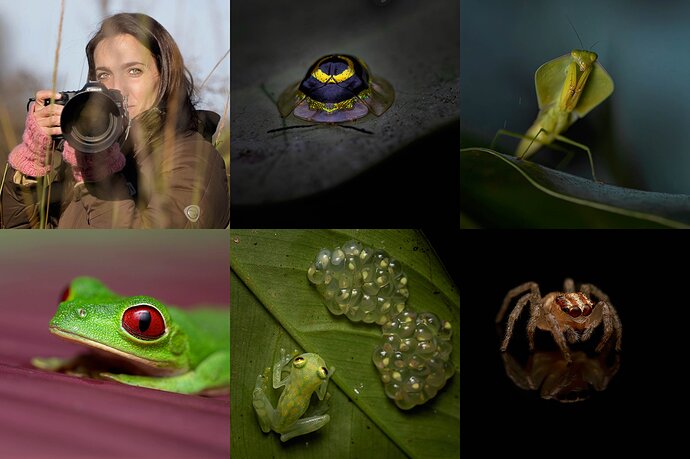New to our NPN community? Choose from two fantastic options. Either sign up for free to join the AMA discussion or become a full-fledged member for complete access to our community and its multitude of opportunities. We’re excited to welcome you!
Hi, I am Cynthia Bandurek, an Ecologist, Field Naturalist, Nature Photographer and a wildlife artist. Since I was a child I have been enthralled by nature. After High School years, led by my innate passion, I decided to undertake Ecology and Environmental Studies followed by the career of Field Naturalist.
While pursuing the career of Naturalist, I discovered Photography, which later became a core part of my life and an essential tool to transmit my knowledge and values of the natural world. I particularly specialized in macro photography and my most outstanding portraits are on arthropods and amphibians.
In 2017 I published the Book: “The World of Small. An approach to the universe of arthropods from an artistic, visual and evolutionary perspective” This book combines science and photography to change the public’s perception of these small living beings, through the photographs we can access a world that our naked eyes can´t see accompanied by texts that revealed the hidden and sometimes unbelievable stories of these magnificent animals.
In January 2021, I made a significant life change by moving from the bustling city of Buenos Aires, Argentina, to the lush jungles of Costa Rica. This move was motivated by my desire to live in closer harmony with nature and immerse myself fully in its wonders.
I am a Nature First Ambassador and a Contributor editor for Central and South America of Paws Trails Magazine, an online magazine focused on Photography, science, and Conservation.
Website: https://cynthiabandurek.com/
AMA Guidelines:
- To ensure all inquiries are addressed, we kindly ask that you pose a single question by responding to this thread just once, using the “Submit a question” button situated at the bottom of the page. We advise scanning through the existing questions at the bottom to prevent repetition before submitting your query.
- To ensure fairness and inclusivity, please limit yourself to one question, allowing an opportunity for everyone to participate.
- Please refrain from commenting on others’ posts. The purpose of responses in this thread is exclusively for posing questions to the guest speaker. If you wish to delve into a related topic more comprehensively, feel free to initiate a new discussion thread.
Posts that do not adhere to these guidelines may be removed by the moderation team in an effort to maintain the fluidity and effectiveness of the Q&A session. We appreciate your cooperation!
